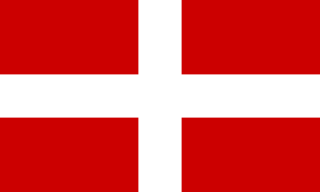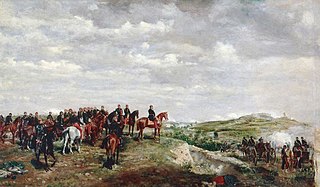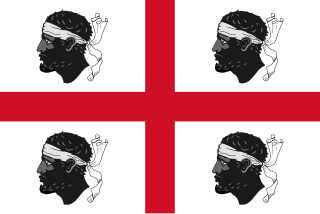
Savoy is a cultural-historical region in the Western Alps. Situated on the cultural boundary between Occitania and Piedmont, the area extends from Lake Geneva in the north to the Dauphiné in the south and west and to the Aosta Valley in the east.

The Cisalpine Republic was a sister republic of France in Northern Italy that existed from 1797 to 1799, with a second version until 1802.

The War of the Second Coalition was the second war targeting revolutionary France by many European monarchies, led by Britain, Austria, and Russia and including the Ottoman Empire, Portugal, Naples and various German monarchies. Prussia did not join the coalition, while Spain supported France.

.

Marengo was a department of the French Consulate and of the First French Empire in present-day Italy. It was named after the Marengo plain near Alessandria to commemorate the eponymous French victory. It was formed in 1802, detaching part of the department of Tanaro, when the Subalpine Republic was directly annexed to France. Its capital was Alessandria, formerly the capital of Tanaro.

Pô was a department of the French Consulate and of the First French Empire in present-day Italy. It was named after the river Po. It was formed in 1802, when the Subalpine Republic was directly annexed to France. A provisional department called Eridan was planned in 1799 and established in 1801 in the French-occupied Piedmont. After the annexation, Eridan was divided between Po and Doire. Its capital was Turin.

The Ligurian Republic was a French client republic formed by Napoleon on 14 June 1797. It consisted of the old Republic of Genoa, which covered most of the Ligurian region of Northwest Italy, and the small Imperial fiefs owned by the House of Savoy inside its territory. Its first Constitution was promulgated on 22 December 1797, establishing a directorial republic. The directory was deposed on 7 December 1799 and the executive was temporarily replaced by a commission. In 1802, a doge was nominated for a 5-year term, according to the second Constitution imposed by Napoleon, and a Senate was established.

The Second Italian War of Independence, also called the Sardinian War, the Austro-Sardinian War, the Franco-Austrian War, or the Italian War of 1859, was fought by the Second French Empire and the Kingdom of Sardinia against the Austrian Empire in 1859 and played a crucial part in the process of Italian Unification.

The Republic of Alba was a revolutionary municipality proclaimed on 26 April 1796, in Alba, Piedmont, when the town was taken by the French army. The municipality had a very short life of only 2 days because, with the Armistice of Cherasco on 28 April 1796, King Victor Amadeus III of Sardinia was given back the civil control of all Piedmont.

A sister republic was a republic established by French armies or by local revolutionaries and assisted by the First French Republic during the French Revolutionary Wars. These republics, though nominally independent, relied heavily on France for protection, making them more akin to autonomous territories rather than independent states. This became particularly evident after the declaration of the French Empire, when several states were annexed, and the remaining turned into monarchies ruled by members of the Bonaparte family.

The Republic of San Marco or the Venetian Republic was an Italian revolutionary state which existed for 17 months in 1848–1849. Based on the Venetian Lagoon, it extended into most of Venetia, or the Terraferma territory of the Republic of Venice, suppressed 51 years earlier in the French Revolutionary Wars. After declaring independence from the Habsburg Austrian Empire, the republic later joined the Kingdom of Sardinia in an attempt, led by the latter, to unite northern Italy against foreign domination. But the First Italian War of Independence ended in the defeat of Sardinia, and Austrian forces reconquered the Republic of San Marco on 28 August 1849 following a long siege.

The Kingdom of Sardinia, also referred to as the Kingdom ofSardinia-Piedmont or Piedmont-Sardinia as a composite state during the Savoyard period, was a country in Southern Europe from the late 13th until the mid-19th century.

The Piedmontese Republic was a revolutionary, provisional and internationally unrecognized government established in Turin between 1798 and 1799 on the territory of Piedmont during its military rule by the French First Republic.

The Plombières Agreement of 21 July 1858 was a secret verbal agreement which took place at Plombières-les-Bains between the chief minister of Piedmont-Sardinia, Count Cavour, and the French Emperor, Napoleon III. Some older English sources refer to it as the Treaty of Plombières. In modern times, it is merely referred to as an "agreement", since nothing was signed.

The flag of Piedmont is one of the official symbols of the region of Piedmont in Italy. The current flag was adopted on 24 November 1995.

The Convention of Alessandria was an armistice signed on 15 June 1800 between the French First Republic led by Napoleon and Austria during the War of the Second Coalition. Following the Austrian defeat at the Battle of Marengo, they agreed to evacuate Italy as far as the Mincio and abandon strongholds in Piedmont and Milan. Great Britain and Austria were allies and hoped to negotiate a peace treaty with France, but Napoleon insisted on separate treaties with each nation. The negotiations failed, and fighting resumed on 22 November 1800.

The Regiment "Nizza Cavalleria" (1st) is a cavalry unit of the Italian Army based in Bellinzago Novarese in Piedmont. The regiment is the reconnaissance unit of the Alpine Brigade "Taurinense".

The Kingdom of Sardinia is a term used to denote the Savoyard state from 1720 until 1861, which united the island of Sardinia with the mainland possessions of the House of Savoy. Before 1847, only the island of Sardinia proper was part of the Kingdom of Sardinia, while the other mainland possessions were held by the Savoys in their own right, hence forming a composite monarchy and a personal union which was formally referred to as the "States of His Majesty the King of Sardinia". This situation was changed by the Perfect Fusion act of 1847, which created a unitary kingdom. Due to the fact that Piedmont was the seat of power and prominent part of the entity, the state is also referred to as Sardinia-Piedmont or Piedmont-Sardinia and sometimes erroneously as the Kingdom of Piedmont.

The Armistice of Villafranca, concluded by Napoleon III of France and Franz Joseph I of Austria on July 11, 1859, set the stage for the end of the Second War of Independence.




















